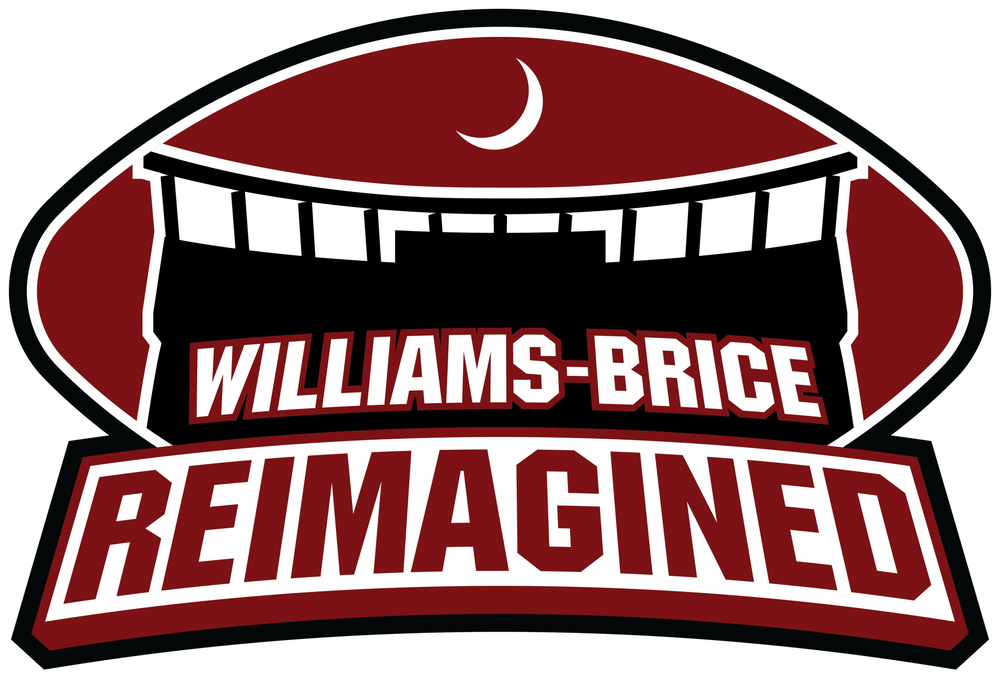History of Title IX Exhibit on Display Tuesday at Colonial Life Arena
The road to success for today’s women’s athletics programs at the University of South Carolina was paved decades ago by pioneering coaches, student-athletes, and administrators. Their perseverance and grit in the years before Title IX was passed 50 years ago as well as in the growing years that followed, are now on display.
Students in Dr. Christian Anderson’s “History of Higher Education in America” class from the College of Education recently conducted research about the history of Title IX and women’s athletics at the University in a collaborative effort between Athletics and academics. The result of their semester-long efforts is a traveling exhibit highlighting the first female student-athletes and coaches at South Carolina. That exhibit is appropriately on display Tuesday night beginning at 6 p.m. at the McGuire Club inside Colonial Life Arena, where the defending national champion Gamecock women’s basketball team will host UCLA at 7 p.m.
“It’s a super important story,” Dr. Anderson said. “Understanding how we got to where we are today is important and the contributions of these women are really important. Fifty years ago, women were basically playing in the Blatt P.E. Center on campus. Even in the early days of intercollegiate athletics, they were playing in the Blatt and the Naval Armory. Going from that to today’s sold-out Colonial Life Arena and Dawn Staley, young people may take it for granted that this is the way it has always been.
“In the exhibit, you get a little bit of a general overview of the history of Title IX. Then they’ll get the USC story and what women’s athletics was like throughout the twentieth century. There’s something as early as 1917 where editors of The Gamecock said, ‘there is no brick or chunk of wood on the University campus that girls might call their own.’ It was a battle for equality from then on. You see the history in the early 1970s with the first women who were given scholarships and the sports we had then. And we have what women’s athletics looks like today and how this is a top school for female student-athletes.”
Title IX was passed in 1972 and stated that “No person in the United States shall, on the basis of sex, be excluded from participation in, be denied the benefits of, or be subjected to discrimination under any education program or activity receiving federal financial assistance.”
The exhibit was put together by 23 students which can easily be moved to be set up in different locations. The idea for it was a collaborative effort between the Athletics Department and the University. Last year, Dr. Anderson had been doing research and gathering artifacts for an exhibit based on a book he authored about the history of college football. That led to a conversation with Jessica Allison in the Athletics Department about the fiftieth anniversary of Title IX and her suggestion of having the class do a project on the subject.
“The SEC pulled together a representative from each of the 14 schools and encouraged us to think outside the box on how we’re going celebrate the fiftieth anniversary and look for opportunities to collaborate with other parts of campus,” said Allison, who co-chaired South Carolina’s Title IX committee with Executive Associate Athletics Director Maria Hickman. “I found it hard to find a lot of information about the history of our women’s sports, so I thought, how can we celebrate Title IX if we don’t know how our women’s sports began? Dr. Anderson was bringing some things back to us (from his previous project), and we agreed that there was an opportunity for the Athletics Department, the College of Education, and the Department of Oral History to partner.”
“This just made my heart sing because it allowed these women to tell their own stories.”
Allison did a lot of research and tracked down names and contact information for nearly two dozen former varsity female student-athletes as well as previous Title IX advocates on campus so the students wouldn’t be doing their research from scratch.
“This just made my heart sing because it allowed these women to tell their own stories,” Allison said.
“I had my students do oral history interviews with the first (varsity) women athletes and coaches and turn those, along with other research they would do, into an exhibit,” Dr. Anderson said. “They’ve been working on this all semester. I’m really pleased with it.”
The exhibit can be moved upon request to be set up in other areas on campus and in the community. Wherever it is displayed, the exhibit is a great example of how the determined efforts of others in the past have allowed many more to benefit today.
“Just because Title IX passed in 1972, it doesn’t mean things happened over night,” Dr. Anderson said. “It took years. Our exhibit is ten large display banners, but it’s just the tip of the iceberg.”
“My hope is that we can expand this project to more female student-athletes in 2024 when we celebrate fifty years of varsity women’s sports in our department,” Allison said.
Women’s sports at the University of South Carolina have enjoyed great success at the state, conference and national level across the board. With national championships in women’s track and field, equestrian and basketball in recent years, along with many other individual and team accolades, the Gamecocks have come a long way since some humble beginnings. Not only have the women’s programs consistently garnered national rankings and various conference championships, but the fans have thoroughly embraced those programs, evidenced by South Carolina ranking among the conference and national leaders each year for attendance in sports such as basketball, soccer, and volleyball.
Anyone interested in having the exhibit displayed can contact Jessica Allison, Employee Development Manager for South Carolina Athletics, at 803.777.7869 or email allisonj@mailbox.sc.edu.












